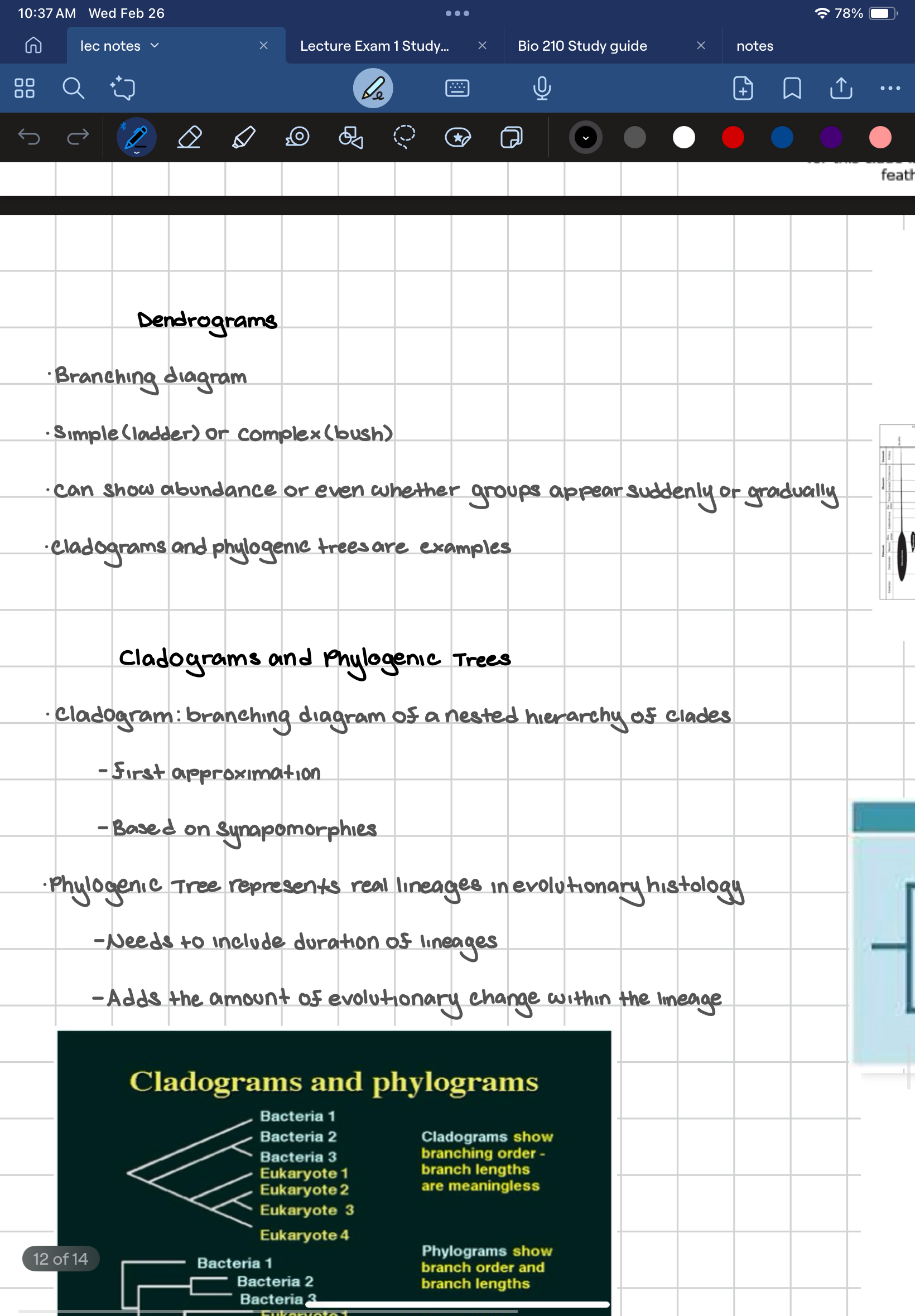Zoology exam study guide
1/26
Earn XP
Description and Tags
Name | Mastery | Learn | Test | Matching | Spaced |
|---|
No study sessions yet.
27 Terms
What is zoology?
The scientific study of animal life
What are the steps in the scientific method?
Observation, Hypothesis, Predictions, Test.
What properties do living systems share?
Environmental interaction, Reproduction, Metabolism, Complexity and hierarchy organization, a genetic program.
What are the scientific characteristics of animals?
Heterotrophic, eukaryotic, multicellular, sensory organs.
What is basic evolution?
A process resulting in genetic change in a population/organisms over time.
What does it mean to be haploid or diploid?
Haploid (n=23) has one set of chromosomes/ one copy of each gene ; Diploid (2n=46) has two sets after fertilization/ two copies of each gene
How does the chromosomal theory of inheritance relate to Darwin's theory of evolution?
It proposes a mechanism for genetic variation and inheritance, which underlies Darwin's natural selection.
What is the difference between microevolution and macroevolution?
Microevolution involves small changes in allele frequency over time; macroevolution leads to significant genetic changes over very long periods.
Who was Alfred Wallace, and what was his influence on Darwin's theory?
Wallace studied similar concepts as Darwin and proposed survival of the fittest; he influenced Darwin by sharing his manuscript.
How did Lamarck explain evolutionary change, and how was he incorrect?
Lamarck suggested inheritance of acquired characteristics; Darwin's natural selection correctly explains trait inheritance.
What are examples of evidence for Darwin's theory of evolution?
Allopatric speciation, sympatric speciation, multiplication of species, adaptive radiation, gradualism.
Compare and contrast evolution through natural selection and through genetic drift.
Natural selection improves the survival of organisms with advantageous traits; genetic drift is a random change in allele frequency.
What barriers prevent similar species from interbreeding?
Geological and reproductive barriers.
What distinguishes cladograms from phylogenetic trees?
Cladograms focus on clade relationships; phylogenetic trees reflect real evolutionary lineages.
What are monophyletic, paraphyletic, and polyphyletic taxa?
Monophyletic includes a common ancestor and all descendants; paraphyletic includes a common ancestor but not all descendants; polyphyletic does not include the common ancestor.
What causes mutation?
A change in nucleotides.
Define microevolution.
A change in allele frequency within a population.
What defines a species?
A group capable of reproducing and creating fertile offspring.
What is an example of something that is not a species?
A mule, which is a hybrid of horse and donkey but cannot reproduce.
What is the bottleneck effect?
A sharp reduction in the size of a population, leading to decreased genetic diversity.
How does the environment influence natural selection?
Organisms with less favorable traits for the environment are less likely to survive.
What is inclusive fitness?
Traits that favor survival of a relative.
What is sexual selection?
Traits that are favorable to attract mates, reproduce.
Define homology and homoplasy.
Homology refers to shared traits due to common ancestry; homoplasy refers to traits shared due to convergent evolution.
What is the scientific name of an animal?
A name composed of two parts: genus and species.

What is a dendrogram?
A dendrogram is a tree-like diagram that illustrates the arrangement of the clusters produced by hierarchical clustering.
Name the group names
“K.P.C.O.F.G.S” king phillip came over for great spaghetti
Kingdom. Phylum.